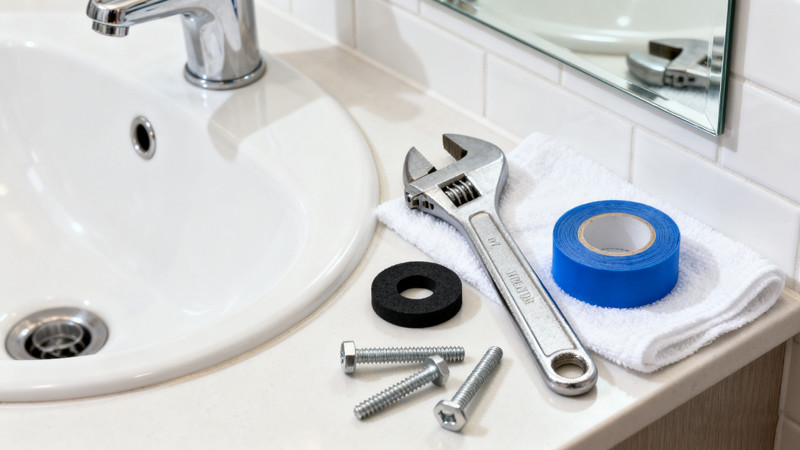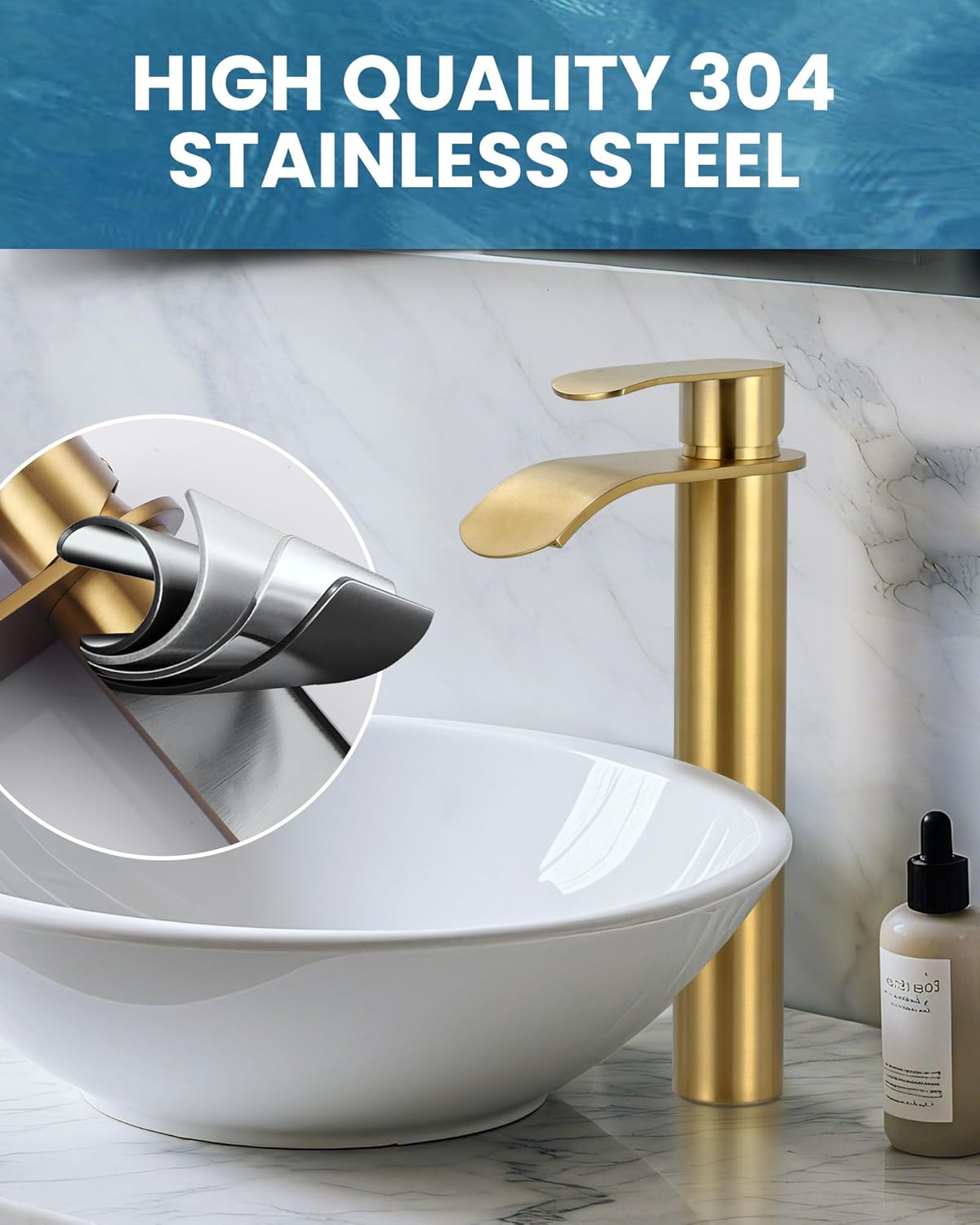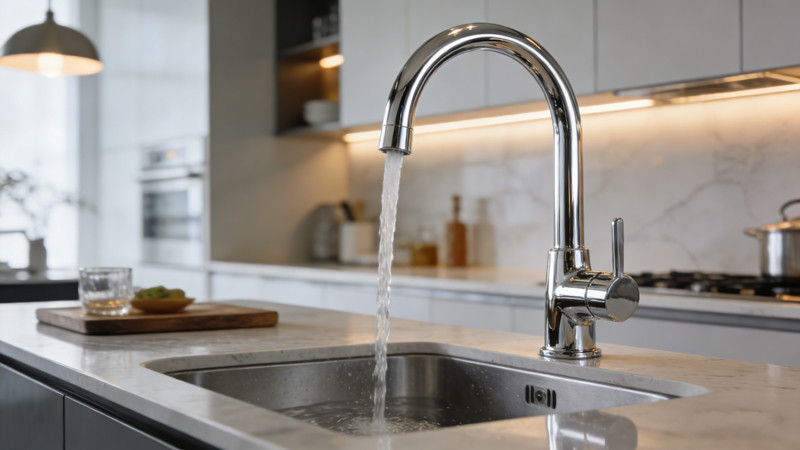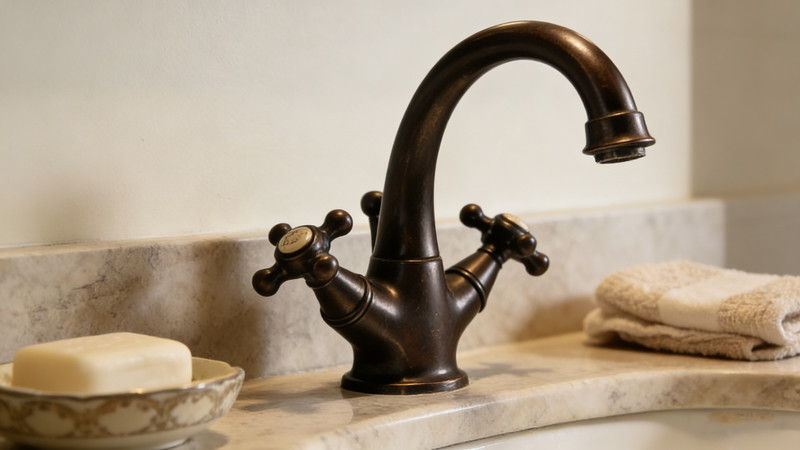A faucet should feel secure and steady whenever you turn it on or off. But over time, you may notice your faucet starting to wiggle, shift, or feel loose at its base. While it may still work, this wobbling can be both irritating and a warning sign of wear in your plumbing. Left unchecked, a faucet that wiggles in place can lead to leaks, water damage, or a complete fixture failure. Fortunately, most of these problems are easy to fix with basic tools.
Why Faucets Start to Wiggle
Understanding the causes of a wobbly faucet is the first step toward fixing it. Here are some of the most common reasons:
- Loose Mounting Hardware
Beneath the sink or countertop, your faucet is secured with a nut or bracket. Over time, vibrations from turning the handle or water pressure can cause these fasteners to loosen. - Worn or Damaged Gaskets
Rubber or plastic gaskets sit between the faucet base and the sink surface to provide a snug fit. When these wear out, the faucet may shift. - Improper Installation
If the faucet was not installed tightly in the first place, it may loosen more quickly with daily use. - Countertop Wear or Warping
In some cases, damage to the sink or countertop itself can prevent the faucet from staying stable. - Heavy Usage
Kitchen faucets, in particular, endure frequent pulling and swiveling. Pull-down sprayers and high-arc designs put more stress on mounting hardware, making them prone to wiggle.
Tools and Materials You’ll Need
Most faucet repairs are straightforward and require only a few items:
- Adjustable wrench or basin wrench (for tight spaces under sinks)
- Screwdriver (flathead or Phillips, depending on your faucet)
- Plumber’s putty or silicone sealant (optional, for extra stability)
- Replacement gaskets or mounting hardware (if worn or damaged)
- Flashlight or headlamp (to see under the sink clearly)
Step-by-Step Guide to Fixing a Wobbly Faucet
Step 1: Clear the Space Under the Sink
Remove cleaning supplies, trash bins, or anything else stored under the sink. You’ll need space to work and easy access to the faucet’s mounting area.
Step 2: Locate the Mounting Hardware
Look up toward the underside of the faucet. Most faucets are held in place with a large nut, washer, or bracket. If your faucet has a pull-down sprayer, you’ll also see hoses and weights—move them gently aside for visibility.
Step 3: Tighten the Mounting Nut
- Use an adjustable wrench or a basin wrench to grip the nut.
- Turn clockwise until snug. Be careful not to overtighten, which can crack plastic parts or damage the sink.
- If the nut keeps slipping, you may need to replace it.
Step 4: Check the Gasket
If tightening doesn’t stop the wobble, the gasket may be worn out. Remove the faucet completely, inspect the gasket between the faucet base and sink, and replace it if cracked or flattened.
Step 5: Reinstall with Stability in Mind
When reinstalling, make sure the faucet sits flat on the sink surface. Use plumber’s putty or silicone sealant under the base for added grip and to prevent water from seeping beneath.
Step 6: Secure and Test
After tightening and reinstalling, turn on the faucet and test for movement. It should now feel steady and secure.
Special Cases
Single-Handle Faucets
These often wobble at the handle as well as the base. In addition to tightening the mounting hardware, check the set screw that holds the handle in place.
Pull-Down or Pull-Out Sprayer Faucets
The hoses and frequent swiveling add extra strain on the base. If you have recurring issues, consider upgrading to a faucet model designed with reinforced mounts.
Bathroom Faucets
Smaller bathroom faucets typically have less stress, but they can still wiggle if the sink material is thin. In these cases, using a stronger mounting bracket can help.
Preventing Faucets from Loosening Again
- Check Mounting Hardware Periodically
A quick inspection under the sink once a year can help you catch loosening before it becomes a problem. - Avoid Over-Torquing the Handle
Turning the handle too forcefully adds unnecessary strain to the base. - Clean Mineral Deposits
Hard water can build up around the faucet base, wearing down seals and gaskets. Regular cleaning keeps parts in good condition. - Upgrade Old Fixtures
If your faucet is more than 10–15 years old, replacing it entirely may be a smarter long-term fix than repeated repairs.
When to Call a Plumber
Most wobbly faucets can be fixed by homeowners, but professional help may be needed if:
- The countertop or sink surface is cracked or damaged.
- The faucet won’t tighten even with new hardware.
- You suspect hidden water damage beneath the sink.
A plumber can confirm whether a new faucet installation or countertop repair is necessary.
Final Thoughts
A faucet that wiggles in place isn’t just a nuisance—it’s a sign that something is loose, worn, or improperly installed. The good news is that fixing the problem is often simple and inexpensive. By tightening mounting hardware, replacing worn gaskets, and applying a little plumber’s putty, you can restore your faucet to like-new stability.
With regular checks and mindful use, you’ll prevent future wobbling and keep your faucet secure for years to come. And if the problem proves too stubborn, calling a professional ensures your plumbing remains safe, functional, and leak-free.
 WOWOW Faucets
WOWOW Faucets






